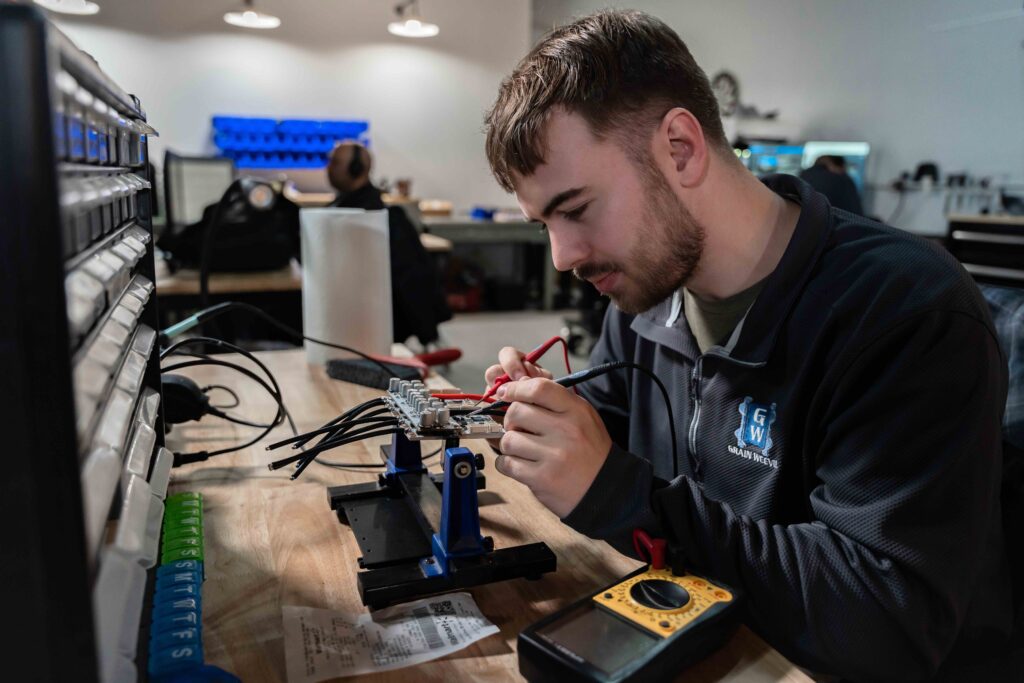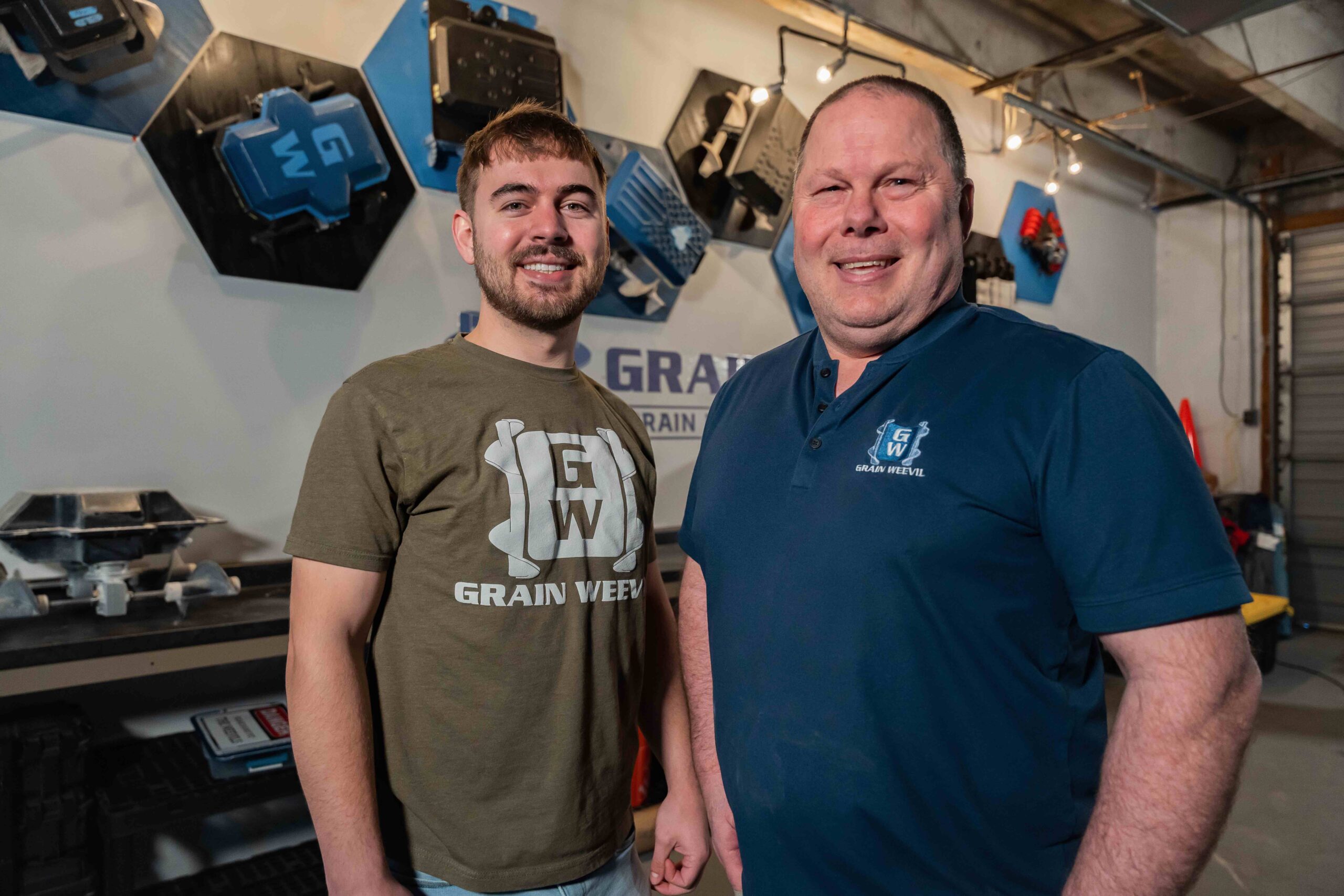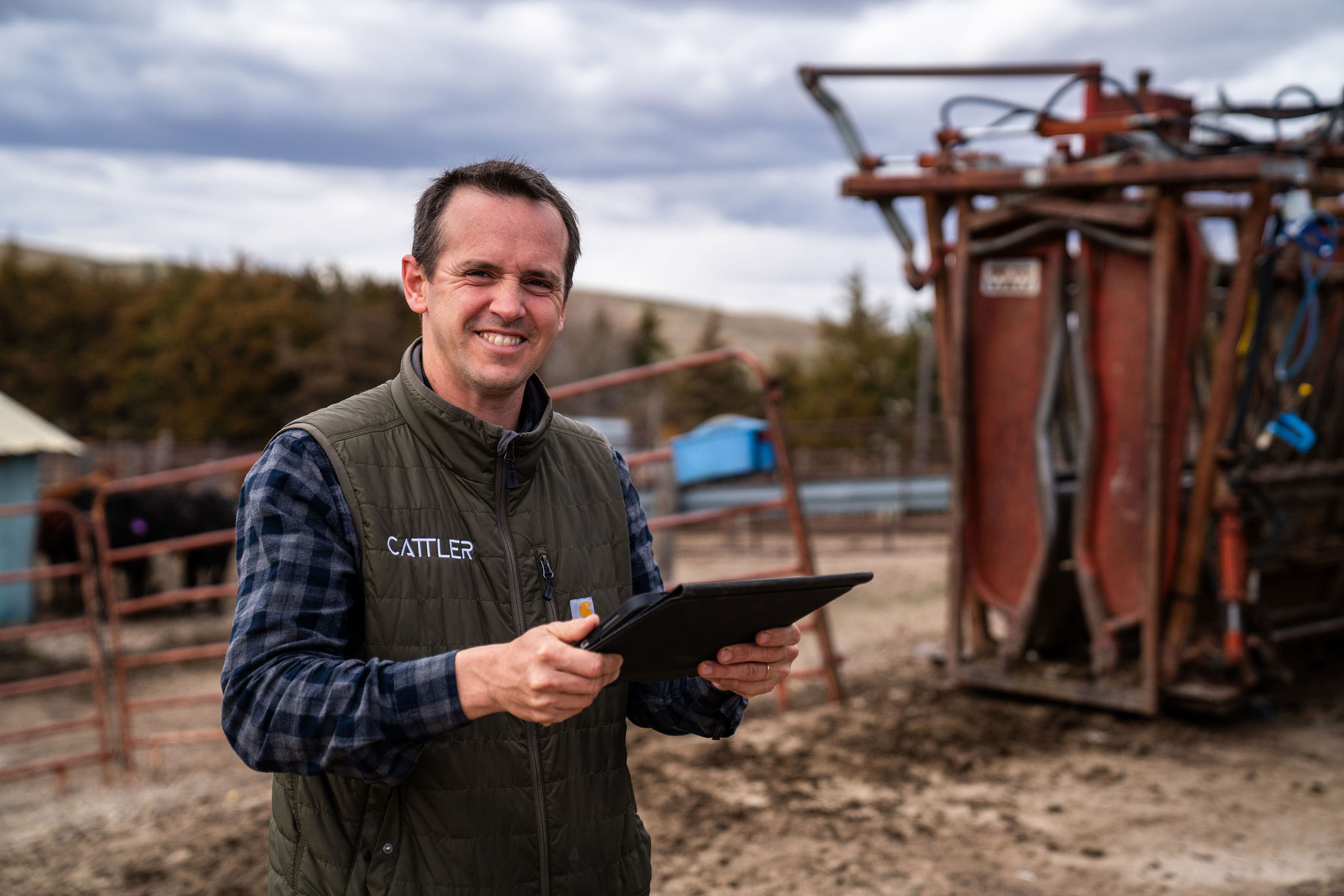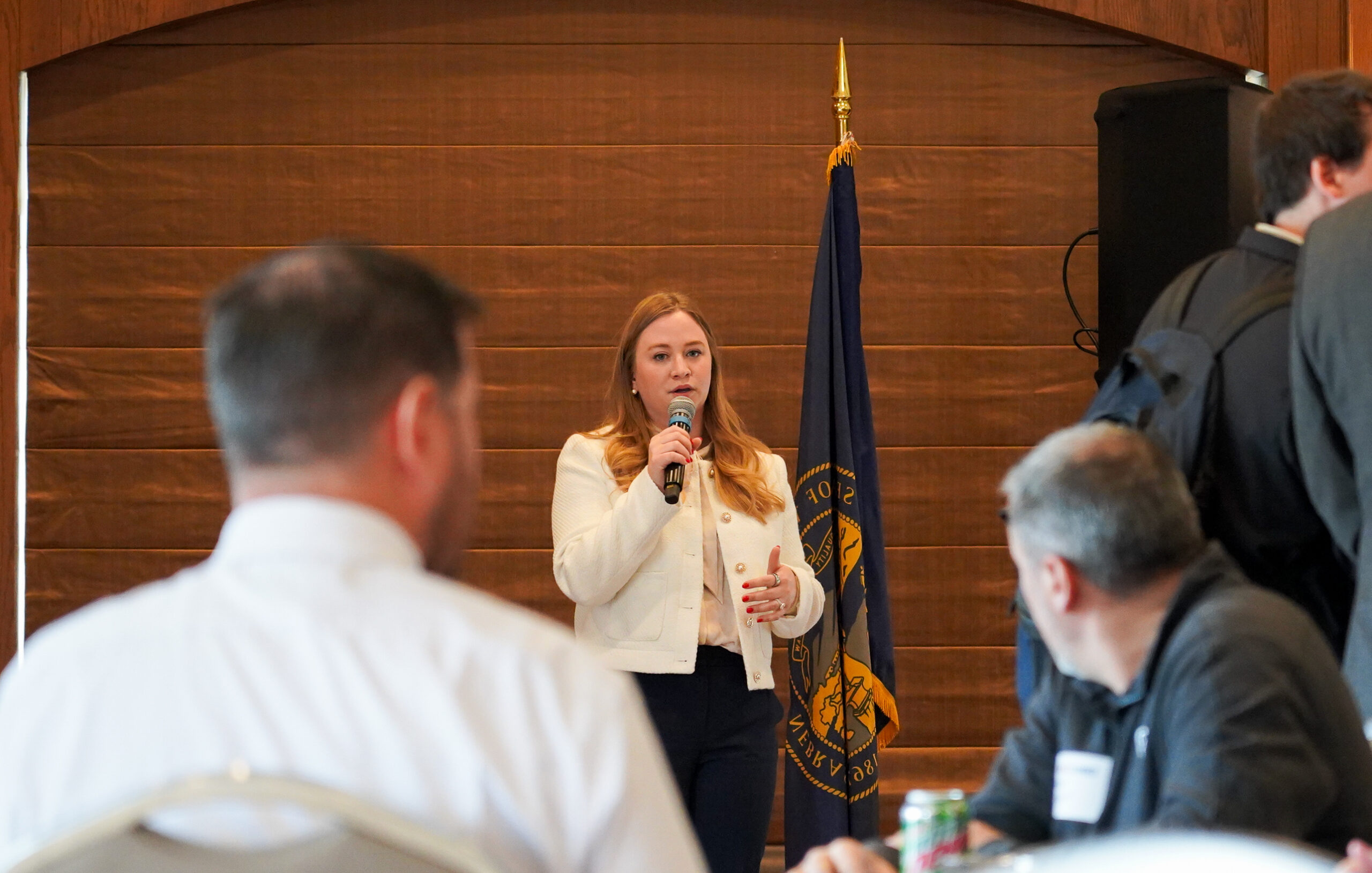Each year, dozens of American farmers are injured or killed after they climb into a grain bin.
A father-son duo from Aurora founded their company, Grain Weevil, with one mission: No boots in the grain.
Chad Johnson and his son Ben created a robot, the Grain Weevil, designed to level and break the crusts that form inside grain bins, do inspections and feed grain into extraction augers; most of the necessary tasks farmers do inside of the bins.
The pair started developing their grain bin management robot in 2020 when a friend asked them to “Build me a robot so I never have to go into a grain bin again.”
There’s ample reason to stay out of a grain bin.
Farmers use these bins – large metal cylindrical structures with a peaked roof – to keep harvested grain dry and free of insects.
Bins have a ladder or staircase on the outside to make the interior of the structure accessible to farm workers who are responsible for the dangerous and labor intensive task of manually breaking up clumps of grain with a shovel.
Every year dozens of these workers are injured while performing their duties. And more than a handful of those accidents result in death because someone suffocates after being engulfed in the grain, becomes trapped or has a heart attack. The job is so dangerous that there’s a designated Grain Bin Safety Week held the third week of each February.
Grain Weevil was recently named the 2022 NBDC Innovation Business of the Year in recognition of their efforts to eliminate grain bin deaths through the invention of an autonomous robot. The Grain Weevil robot is currently undergoing trials in grain bins in four states as part of its safety certification.
Once certified, the Grain Weevil will be the only grain bin safety management robot commercially available in the world.

An early passion for robotics
Growing up in Aurora, Nebraska, Ben took to robotics early and started entering competitions around sixth grade. When he joined the high school robotics team, Chad was his coach.
“I dragged him to the state fair and made him do demonstrations because it’s just a really cool way to try to give him skills to be able to do something that would be fun,” Chad said. “Then all of a sudden the projects turned into a real business.”
Ben got into designing printed circuit boards and doing wiring to create custom robots. He then spent much of his time in high school commissioning various robotic projects for different small businesses. He built a remote-controlled prototype for a dump truck lift system, a dynamic display for a hunting company’s bi-pod gun support and a “follow bot,” which selected a color of a tour guide’s shirt, and then followed them for virtual video tours.
While working on the follow-bot, a friend of the Johnsons, who is a farmer, asked them for a favor: build him a robot that would keep him and his kids out of grain bins.
Ben was studying electrical engineering at the University of Nebraska at Omaha at the time.
The Johnsons had no history in agriculture and were unaware of the dangers in the day-to-day work farmers engage with in grain bins. After doing some research, they found it to be a fitting challenge to build a prototype to help their friend.
“We still didn’t even think of it as a real business at that point,” Ben said. “We just wanted to help our friend.”
A problem worth solving
Farmers do a variety of tasks inside a grain bin. Because a layer of crust appears at the top, someone must manually break it up. To keep a consistent airflow, someone must level the grain, which can require hours of shoveling inside the bin.
“There is no airflow in there,” Ben said. “If you’re working in there, it’s stagnant, the sweat pools up on your arms. It’s dusty and if you don’t wear a respirator you get terrible lung problems later in life.”
The inventors measured the air temperature inside a bin: 120 degrees Fahrenheit. Farmers shovel thousands of bushels of grain, each weighing around 55 pounds, to break it up and allow air to flow.
When emptying the grain, it comes down the center creating an inverted cone with 12-foot-high walls surrounding it. While bins have a sweep auger that rotates to pull the grain towards the center, someone must also be inside, scooping grain off the walls.
The combination of blistering heat, grain above one’s head and an auger moving below for hours on end is a recipe for disaster, Ben said.
In 2022, at least 29 grain entrapments were reported, 11 resulting in death, according to Nationwide Insurance Company. In the last decade, Nationwide reports, over 300 entrapments have been disclosed, along with an estimated 30% going unreported.
The turning point
Things started moving quickly after the Johnsons developed their first prototype.
They got their first model to work on a Saturday morning in 2020. That afternoon they went next door to see their neighbor, who happened to be a patent lawyer. By Monday they had a patent submitted. Then on Tuesday, their local Corn Growers Association sponsored a community showing of the movie Silo.
Based on a true story, Silo is a 2019 thriller that follows a local community’s efforts to save a child entrapped in a grain bin after trying to save an older man.
Chad and Ben brought a clip of their robot to the screening to show community members the machine that would have prevented the accident. They set up sticky notes, and instantly received hundreds of questions and comments about the Grain Weevil from farmers who attended the screening.
Someone posted their clip to Twitter where it garnered more than 80,000 views. The pair received hundreds of direct messages. They realized they had a product that could make an impact.
While the Johnsons had experience making robots out of car parts and whatever materials they could find – at one point Ben made a robot called ‘stuff we found at Ace hardware’ for a competition – applying this knowledge to an autonomous robot that drove in a grain bin was totally different.
The prototype proved the concept was possible, but it could only drive for around 30 seconds.
Whenever Ben could come home from college, the pair would work in their garage figuring out how to solve various challenges that farmers have to deal with inside a grain bin. Over the course of 10 different models, they changed how the robot operated to address each issue.
The battery they ended up using didn’t even exist five years ago, Chad said. The small form, high-power battery and motor systems weren’t widely available when the Johnsons began work on the robot and didn’t become accessible until the trend of electric scooters started becoming widespread, according to Chad.
This convergence of new technology and the right idea allowed them to come out at the forefront of this innovation.
“We had experience in finding the cheap, hobby, internet things making them all work and figuring everything out,” Chad said. “So that’s what that transition phase has been for us. Get that robot ready to actually be able to perform on the farm, so it’s going to be easy to use and reliable and all of that. It’s been a fun process.”
Ben and his friend Zane Zents began working for Grain Weevil full-time just after graduating in May 2021. Chad was able to quit his job working for the Nebraska Public Power District as an education specialist in January 2022, allowing him to cut down the 90 hours he said he worked a week between the two occupations.
“If you’re a nerd and a dad, it’s pretty much every dad’s dream to build robots with your kid,” Chad said. “I feel extremely lucky that we have a relationship that we get to work together, have fun, and really make a difference.”
Chad’s wife and Ben’s mom, Alesa, works in the company as well, as the full-time grant manager.
“Our family is trying to do something to help other families, and we keep that kind of mentality,” Chad said.

What’s next
Today, the Grain Weevil has amassed over 80 million views on social media, according to Chad Because of this massive outreach, he said farmers constantly reach out asking about the machine’s ability, along with how soon they could have one. The company collected data from hundreds of farmers to understand different needs for different farms, products and grain bins.
They still get around eight to 10 inquiries a day.
“I would like to thank every farmer that’s worked with us,” Chad said. “They’ve made an impact on where we’ve gone, and what we’re doing because their ideas have been implemented in our machine.”
Currently, the company is working on the Safety Certification Process at a UL testing lab — Underwriters Laboratories (UL) is a safety organization that sets industry-wide standards for new products. Grain bins are hazardous locations, as grain dust that is suspended in air can explode when exposed to fire. Because of this, every part of the Grain Weevil must be thoroughly tested to make sure sparks and heat of a certain temperature can’t occur.
They began working on this process in August 2022, when they hired a product design engineer to define their production model. The model that will eventually be accessible to farmers requires a different battery system and a new circuit board design to meet the safety standards in grain bins.
Although they’ll continue to develop the capabilities of the robot before and after its launch, Chad said, the safety certification is their biggest hurdle prior to release.
“It’s been a long process because when we pass these tests,” Chad said. “We’ll be the only robot in the world certified for grain dust explosion operations.”
While they acknowledged that the safety process is essential, the high dangers that farmers deal with every day make it hard for them to not get it out as soon as possible.
While Grain Weevil has been working on their prototype, three people died in grain bins in Nebraska this year, Chad said.
“It just hits too close to home,” Chad said. “That’s kind of what keeps us trying to get things done, but we have to do it right.”
Following the safety certification process, the Grain Weevil will be soft launched to a small group of customers later this fall, so that the team can do full care service and look for bugs in the software ahead of a physical launch. Throughout 2024, the creators said they will be slowly releasing more robots as they prepare to go full scale.
While the current machine can accomplish most of the tasks farmers would need to do inside of a bin, it hasn’t removed the need for a person yet. The Grain Weevil cannot sweep the floor now, which means human entry is still necessary, but Ben says they will get there eventually.
“That’s the long-term goal, having automated machines that can do the work that no human should,” Chad said. “That’s our robot.”




